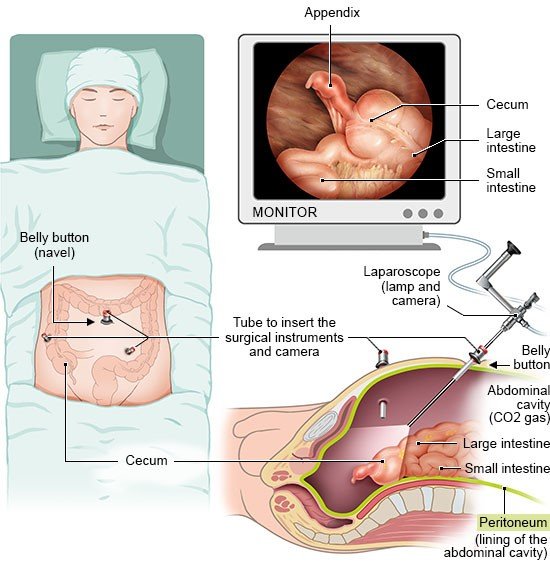Di Saverio S, Podda M, De Simone B et al. Diagnosis and treatment of acute appendicitis: 2020 update of the WSES Jerusalem guidelines. World J Emerg Surg 2020; 15(1): 27.
Gorter RR, Eker HH, Gorter-Stam MA et al. Diagnosis and management of acute appendicitis. EAES consensus development conference 2015. Surg Endosc 2016; 30(11): 4668-4690.
Jaschinski T, Mosch CG, Eikermann M et al. Laparoscopic versus open surgery for suspected appendicitis. Cochrane Database Syst Rev 2018; (11): CD001546.
Largiadèr F, Saeger HD, Keel M et al. Checkliste Chirurgie. Stuttgart: Thieme; 2022.
Low ZX, Bonney GK, So JB et al. Laparoscopic versus open appendectomy in pediatric patients with complicated appendicitis: a meta-analysis. Surg Endosc 2019; 33(12): 4066-4077.
Poprom N, Wilasrusmee C, Attia J et al. Comparison of postoperative complications between open and laparoscopic appendectomy: An umbrella review of systematic reviews and meta-analyses. J Trauma Acute Care Surg 2020; 89(4): 813-820.Pschyrembel Online. Appendektomie. 2022.
Talan DA, Di Saverio S. Treatment of Acute Uncomplicated Appendicitis. N Engl J Med 2021; 385(12): 1116-1123.
Téoule P, Laffolie J, Rolle U et al. Acute Appendicitis in Childhood and Adulthood. Dtsch Arztebl Int 2020; 117(45): 764-774.
IQWiG health information is written with the aim of helping people understand the advantages and disadvantages of the main treatment options and health care services.
Because IQWiG is a German institute, some of the information provided here is specific to the German health care system. The suitability of any of the described options in an individual case can be determined by talking to a doctor. informedhealth.org can provide support for talks with doctors and other medical professionals, but cannot replace them. We do not offer individual consultations.
Our information is based on the results of good-quality studies. It is written by a team of health care professionals, scientists and editors, and reviewed by external experts. You can find a detailed description of how our health information is produced and updated in our methods.


